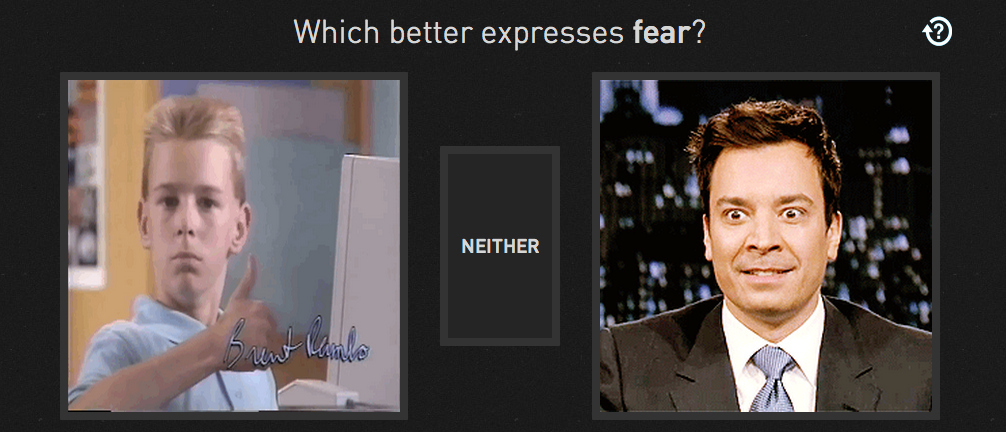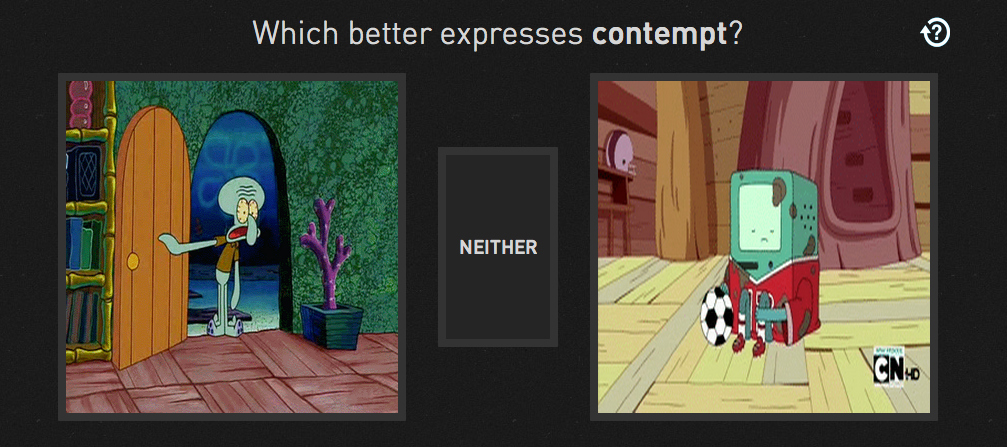MIT Media Lab students Travis Rich and Kevin Hu think animated GIFs are awesome.
The duo have channeled that enthusiasm into GIFGIF, a new interactive project which collects emotional reactions to GIFs, with the hope of creating a more efficient way of indexing them.
"GIFGIF arose out of a serendipitous conversation in which we realized two things," Rich and Hu tell BuzzFeed. "First, GIFs are a legitimate medium -- they are the alphabet of internet culture. Second, we can quantify their content, drawing inspiration from other Media Lab projects like Place Pulse. Plus we love GIFs and this was a tool we wish we had - so we built GIFGIF in our spare time."
GIFGIF collects its data in what feels like a game: two images are placed side by side, and participants are asked to decide which one better expresses a specific emotion (anger, guilt, surprise, disgust, etc.).

The project also includes a search feature, where users can rank any three to five emotional parameters to choose the optimal GIF.

Currently the project uses 1024 "naturally-grown, free-range" GIFs, culled from Giphy, but new GIFs will be added as the current ones become officially categorized. In other words, more votes means more GIFs.

Though the ultimate goal is creating a better GIF website, Rich and Hu also believe their data will shed light on other interesting patterns.
"As with all human interactions, interpretation of emotion varies across cultures, moods, and context," they say. "We'd love to find some data measurements that show this variation quantitatively. We would also like to answer questions like: how are angry GIFs different from sad GIFs? Why are some GIFs ambiguous while others are clear? How many emotions can a single GIF represent?"

GIFGIF was only released on March 3, and these tendencies will emerge as it continues to grow. Still, they've already made some surprising observations.
"[S]ome of the results are much more volatile than others. Happiness is pretty clear-cut, but things like Relief or Shame are constantly changing, suggesting that there is much less of a consensus around what Shame or Relief looks like," they tell BuzzFeed. "Also we've noticed that recurrence of certain celebrities and TV show characters (e.g. Finn and Jake from Adventure Time, Dwight from The Office, Rihanna, Stephen Colbert) in the top of many emotions. Maybe their characters are especially emotive or entertaining, even without context."
